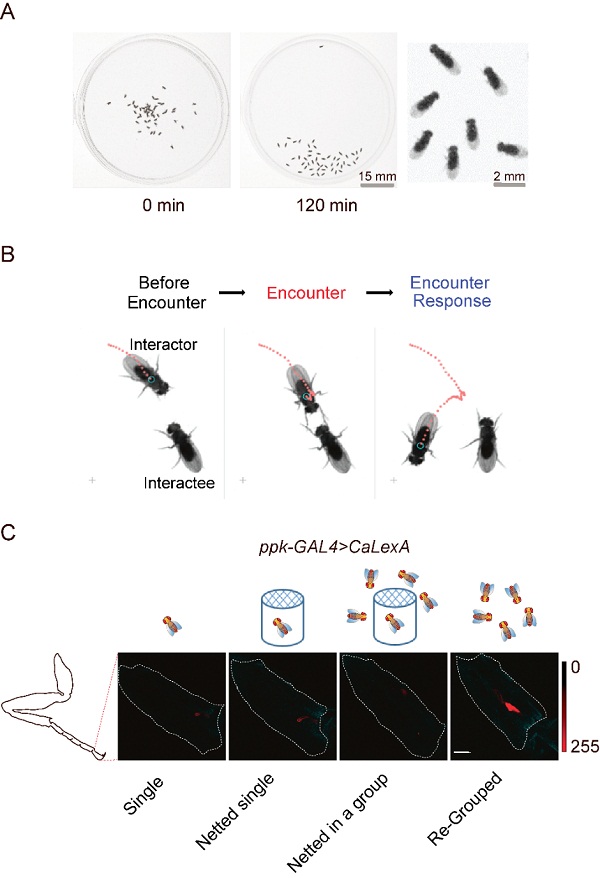
Many animals ranging from swarming insects to wildebeests form large and orderly groups. This collective behavior is often crucial to survival. It may help animals find food, escape predators, enhance the way they sense their surroundings and augment their decision making. But the clustering processes and underlying neural mechanisms remain unclear.
Dr. ZHU Yan’s group from the Institute of Biophysics (IBP) of the Chinese Academy of Sciences investigated what drives clustering in the sociable fruit fly Drosophila melanogaster. Their findings were published online in eLife on Jan. 21.

Self-organized aggregation, encounter response and regulation of ppk neurons in Drosophila. (Image by Dr. ZHU Yan’s lab)
"Analyzing the aggregation process in fruit flies would help us understand how individuals interact to form a social group and what senses are used during this process," said JIANG Lifen, lead author of the study and PhD student at the University of Science and Technology of China. "Investigating this process in fruit flies may give us some insight into more complex collective behaviors in other animals."
In addition, JIANG and the team discovered that fruit flies placed in shallow and covered dishes spontaneously formed clusters with regular spacing between one another. The scientists observed that these formations were driven by fly-fly interactions in which the flies used their legs and wings to touch each other and then established some personal space.
However, systematical interference by the researchers to fruit flies' senses, including sight, odor and touch, stopped them from forming these neat clusters. "Depriving fruit flies of their senses resulted in abnormal responses to encountering another fly and a high failure rate of cluster formation," said JIANG.
The researchers then showed that the flies’ physical interactions with each other switch on their sensory nerve cells. Without these cells, they are unable to establish the usual socially acceptable distances between themselves and other flies that are necessary to form organized clusters.
"Our findings suggest that self-organization in flies might rely on just a few simple rules," said Prof. ZHU Yan. "More studies are needed to determine whether similar rules govern gatherings in larger animals."

86-10-68597521 (day)
86-10-68597289 (night)

86-10-68511095 (day)
86-10-68512458 (night)

cas_en@cas.cn

52 Sanlihe Rd., Xicheng District,
Beijing, China (100864)

